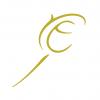Difference in organization of corticostriatal and thalamostriatal synapses between patch and matrix compartments of rat neostriatum.
The neostriatum, which possesses a mosaic organization consisting of patch and matrix compartments, receives glutamatergic excitatory afferents from the cerebral cortex and thalamus. Differences in the synaptic organization of these striatopetal afferents between the patch and matrix compartments were examined in the rat using confocal laser scanning and electron microscopes. Thalamostriatal terminals immunopositive for vesicular glutamate transporter (VGluT) 2 were less dense in the patch than in the matrix compartment, although the density of VGluT1-immunopositive corticostriatal terminals was almost evenly distributed in both the compartments. Quantitative analysis of ultrastructural images revealed that 84% of VGluT2-positive synapses in the patch compartment were formed with dendritic spines, whereas 70% in the matrix compartment were made with dendritic shafts. By contrast, VGluT1-positive terminals display a similar preference for specific synaptic targets in both compartments: about 80% made synapses with dendritic spines. In addition, VGluT2-positive axospinous synapses in the patch compartment were larger than the VGluT1-positive axospinous synapses in both compartments. As axospinous synapses are generally found in neuronal connections showing high synaptic plasticity, the present findings suggest that the thalamostriatal connection requires higher synaptic plasticity in the patch compartment than in the matrix compartment.
2006.Eur. J. Neurosci., 24(10):2813-24.
2025. Cell Rep, 44(6):115808.
2024. Eur J Neurosci, 59(1):54-68.
